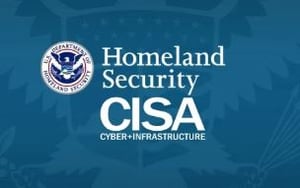 Dan Goodin at Ars Technica reported something worrisome: "A US-based natural gas facility shut down operations for two days after sustaining a ransomware infection that prevented personnel from receiving crucial real-time operational data from control and communication equipment, the Department of Homeland Security said on Tuesday.
Dan Goodin at Ars Technica reported something worrisome: "A US-based natural gas facility shut down operations for two days after sustaining a ransomware infection that prevented personnel from receiving crucial real-time operational data from control and communication equipment, the Department of Homeland Security said on Tuesday.
"Tuesday’s advisory from the DHS’s Cybersecurity and Infrastructure Security Agency, or CISA, didn’t identify the site except to say that it was a natural gas-compression facility. Such sites typically use turbines, motors, and engines to compress natural gas so it can be safely moved through pipelines.
"The attack started with a malicious link in a phishing email that allowed attackers to pivot from the facility’s IT network to the facility’s OT network, which is the Operational Technology hub of servers that control and monitor physical processes of the facility. With that, both the IT and OT networks were infected with what the advisory described as “commodity ransomware.”
"The infection didn’t spread to programmable logic controllers, which actually control compression equipment, and it didn’t cause the facility to lose control of operations, Tuesday’s advisory said. The advisory explicitly said that “at no time did the threat actor obtain the ability to control or manipulate operations.”
"Still, the attack did knock out crucial control and communications gear that on-site employees depend on to monitor the physical processes." End quote, and link to the full story below.
James McQuiggan, Security Awareness Advocate at KnowBe4 commented: "Looking at the CISA report on the incident, this could be the norm for an attack on any ICS/OT organization.
The fact that the attacker was in the IT and OT networks for a period of time where they were able to access the various systems, granted, they were read-only systems it could have been worse.
Organizations that have Operational Technology (OT) environments must consider their OT networks as the crown jewel of their environment and work to properly secure them, isolate them and only allow the necessary access to those environments.
This is further secured by implementing a DMZ environment with single or redundant systems used for machine and interactive user communication. The OT environments need to be isolated, not air gapped and their OT organizations to consider the access to the systems a high priority, with strong accounts and restrictions.
Finally, it's important to educate your employees in cybersecurity. Ransomware often enters via a phishing attack. Teaching users via Security Awareness Training to not engage with suspect or unusual emails is a solid first step in lowering the risk of successful attack."
Ars Technica has the story.




